"Physical: 100" – Netflix's No. 1 non-English speaking show last week and a Top 10 fixture for the past few weeks – has ended its nine-episode run with a finale that was . . . anticlimactic.
The highly anticipated ending for the South Korean fitness survival competition faltered early on as expected winner Yun Sung-bin – a gold medal-winning Olympian, no less! – lost in the semifinal. Noooooooooooo! As viewers at home regrouped, they at least had other fan favorites left in the final five: ice climber/mountain rescuer Kim Min-cheol, who had won over viewers with his functional fitness, and buff car dealer Jo Jin-hyeong, who had a small part in the K-drama "Welcome to Waikiki 2." Except they also fell in quick succession as the final elimination rounds began.
With all the favorites now gone, the show was left with three contestants viewers didn't know much about: luger Park Jin-yong, cyclist Jung Hae-min,and snowboarder/CrossFitter Woo Jin-young. Who were fans supposed to root for at this point?
Yes, they're all amazing athletes and worthy of their place, but a key allure of any reality series is becoming invested in the contestants, and the show frankly shorted these three on screentime. It's baffling why the producers didn't give the finalists the star treatment prior to the last episode if for nothing else than to build anticipation. They deserved it and, well, so did we. I mean, dancer and "Single's Inferno" alum Cha Hyun-seung – who was ousted in the penultimate episode – swigging his beer as he watched was a whole mood, as if he, too, was contemplating what the heck was going on.
And then there were the final challenges, which were on the laborious side – watching men run back and forth and ring a bell is just as exciting as that sounds, even if it is exhausting – and which made the 87-minute closer seem twice as long.
Finally, the grand champion was determined by a game called Infinite Rope Pull, where the players had to unravel a coil of heavy rope. Never mind that a more apropos title would've been the Finite Rope Pull since there was an end to it that Woo Jin-young reached before cyclist Jung Hae-min could to win the ultimate prize of ₩300,000,000 (about $232,000). After they both congratulated each other for being the last competitors standing, Woo was given the honor (?!) of smashing Jung's plaster torso sculpture – a scenario that was oddly cruel in this generally feel-good show.
Though there hasn't been an official announcement for a "Physical: 100" second season, the ominous voiceover before the closing credits hinted at it: "Various physiques exist in this world. Our search for the perfect physique will continue." Netflix would be daft not to grab on to this money generator, and if/when they do, here are a few suggestions that could improve the overall experience for both the athletes and the viewers.
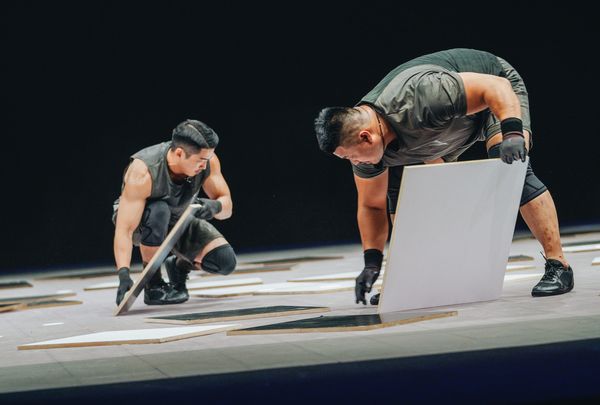 Woo Jin-yong and Jo Jin-hyeong in "Physical: 100" (Netflix)
Woo Jin-yong and Jo Jin-hyeong in "Physical: 100" (Netflix)The referees are there for a reason, but the "Physical: 100" officials weren't consistent with their rulings. For instance, in the game where teams of two had to laboriously flip over each other's tiles by hand, Jung stepped on his tiles, thereby preventing his opponents from flipping his. Clever? Maybe. Fair? Nah. But the refs didn't utter a peep.
Compare this to the one-on-one gladiator deathmatch, which was a combo of mud wrestling and tackle football, with the winner being the last athlete holding on to the ball. In one face-off, prison guard Park Jung-ho used his height advantage to place the ball on the second-level balcony, just out of freestyle wrestler Nam Koung-jin's reach. But the ref called a penalty and gave the ball to Nam, citing that the ball was out of bounds. So. What? Park didn't hide the ball in the commissary. It was literally within reach . . . for him. Had Yang Hak-seon – who was South Korea's first Olympic gold medalist in gymnastics – been competing, I know he could've shimmied up somehow to grab that ball, despite being one of the shortest competitors there.
The question of fairness is questionable anyhow, because while the show's conceit revolves around the kumbaya notion of any of the 100 competitors being able to grab that prize money, the reality is that the challenges were often designed to benefit the buffer male athletes.
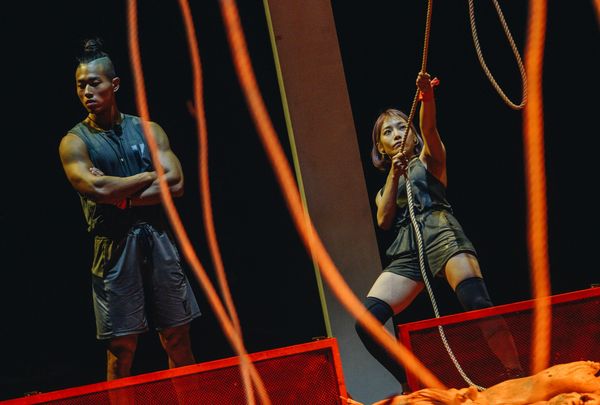 Tarzan and Shim Eu-ddeum in "Physical: 100" (Netflix)
Tarzan and Shim Eu-ddeum in "Physical: 100" (Netflix)"Physical: 100" is capable of designing challenges that are fair for a range of abled body types. For example, in the first challenge, all the contestants hung using only their arms from a scaffold high above a pool of water. Inevitably it was the bodybuilders and muscle-heavy players who dropped first. Bulging biceps didn't matter as much as determination and overall core strength here.
Similarly, a revival quest giving ousted players a chance to reenter the contest challenged them to keep plaster torsos that were exactly 40% of their body weight aloft using a rope and pulley. Failure meant their torsos plummeted to the ground and shattered (forcing them to permanently leave the competition). One winner here was Shim Eu-ddeum, a female exercise YouTuber, whose slight build belied her power, determination and focus. In both of these challenges, the contestants were tested with weight (literally their own) proportional to their size.
Which leads to my next suggestion. In sanctioned sporting tournaments, it's the norm to break up groups by weight class so that a 100-pound athlete isn't pitted against a 200-pound behemoth. "Physical: 100" should keep that in mind when trying to craft truly fair challenges that involve size and strength. On the show, sometimes contestants were able to choose their opponents in head-to-head matchups. While most attempted to pair up with someone their own size, then you'd have MMA fighter Park Hyung-geun, who selected female bodybuilding Kim Chun-ri, because he theorized that it will be easier to beat a buff woman than a man his size. And he was right. He dominated his gladiator challenge while humiliating his opponent.
We can go on and on about challenges that should've divided efforts by weight class: the team challenge to shift a 1.5 ton ship; the Atlas punishment in which contestants shouldered an approximately 110-pound boulder; the five-way tug-of-war with vastly varying body sizes. When faced with opponents larger themselves or shifting objects that were proportionally heavier for the women than the men, guess what? The women were left at a disadvantage.
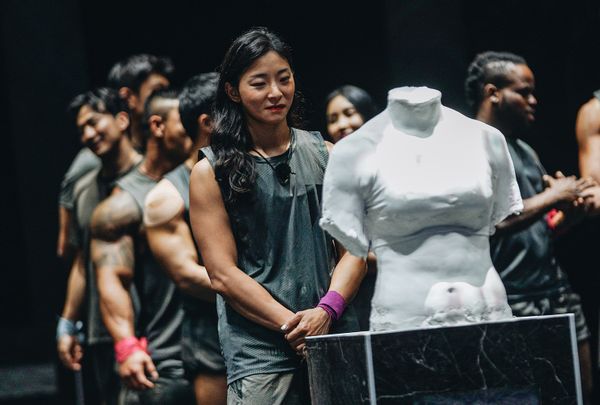 Jang Eun-sil in "Physical: 100" (Netflix)
Jang Eun-sil in "Physical: 100" (Netflix)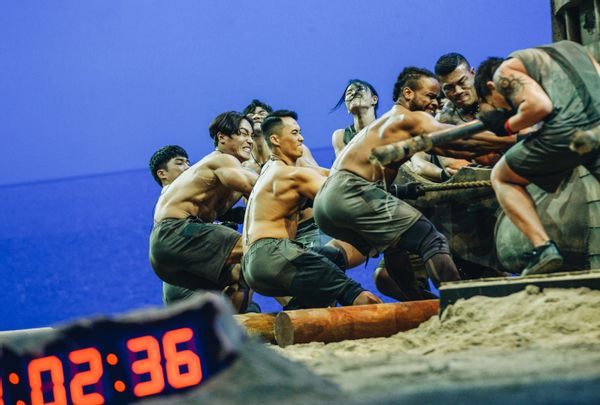 "Physical: 100" (Netflix)
"Physical: 100" (Netflix)There's been so much social media chatter about how refreshing it is to see good sportsmanship played out on this series. And I suppose it is refreshing, if you believe what they're saying. I do, but I don't, meaning that Koreans generally are polite to each other, especially when they're in a public forum. But would the public perception be different if they subtitled all the profanities throughout the series? Because there's a lot of them. There is a liberal use of F-bombs throughout each episode, and I do think that including that foul language lends authenticity by revealing the stress these competitors are under. Besides, who hasn't cursed under pressure?
As long as we're showing the ugly side of competition, let's turn to injuries. One contestant said that ambulances picked up players every half hour. I'm only being partially facetious when I say there's some consolation that no one was seriously maimed on "Physical: 100" – outside of fractured ribs, torn ligaments, damaged ankles and a temporarily paralyzed arm – because the show was clearly set up to give off a similar vibe as the fictional "Squid Game," where the only one leaving the arena with any money was the last person who didn't die.
Throughout this very strenuous series, I couldn't stop thinking about Taiwanese Canadian actor and model Godfrey Gao. In 2019, the physically fit celebrity collapsed while filming the Chinese reality show Chase, where contestants competed in physical challenges. Gao, 35, died from cardiac arrest a few hours later. Also, early reports about the filming of "Squid Game: The Challenge" – Netflix's reality series based on "Squid Game" – indicate that the players were misled about what the requirements of being on the show were. They had to compete outside in freezing weather for seven hours, instead of the promised two. While this is far better than the rumored on-set injuries, it would be better to be upfront about what conditions and challenges contestants will face.
On "Physical: 100," showing when and how a contestant is injured would go a long way for transparency – not only to build viewer trust, but also to demonstrate just how tough the competition is. If these athletes are putting their bodies on the line, let's see that because our respect for their fortitude will only grow. Also, we as viewers will understand and respect how grueling these challenges are (and maybe not try them at home or unsupervised). And maybe if the show is upfront about injuries, they'll be held more accountable to making the games safer.
So let them curse! Let us see when they get hurt! Put the "real" in reality as much as you can, so we can see these contestants as flesh and blood people, not muscled machines.
Want a daily wrap-up of all the news and commentary Salon has to offer? Subscribe to our morning newsletter, Crash Course.
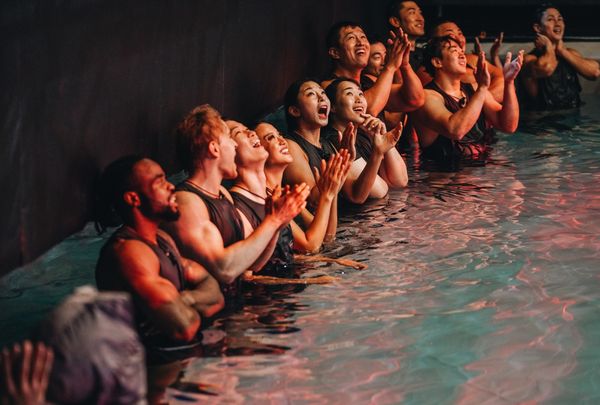 "Physical: 100" (Netflix)
"Physical: 100" (Netflix)Stop with the multiple replays from different angles that add absolutely nothing to anything. This is something Korean variety programs do all the time. Maybe it's to add drama. Maybe it's to pad the show with filler. But it grows old fast.
"Physical: 100" would also benefit from more consistent editing. The concept of the show is that once you lose, you break your own plaster bust and leave the arena, because you are a LOSER! Fine. But during the gladiator challenge we often saw that same person (who supposedly just lost and left) still in the arena cheering, as if they hadn't been handed a defeat. This is a reminder that editing is an art form that plays a vital part of the narrative.
Personally, I thought it was a nice touch to have the players cheer on the others – but from the eliminated sidelines, not as contestants who haven't yet competed. It was wild seeing reality series veteran Cha Hyun-seung ("Singles Inferno") tend to his broken ribs while drinking a beer as he watched the final competitors.
And finally, I loved the up close and personal segments on wrestler Jang Eun-sil, skeleton Olympic gold medalist Yun Sung-bin, and MMA legend Choo Sung-hoon . . . none of whom were the final two competitors. We got to know these players partly because they were already famous before the show and partly because "Physical: 100" decided to feature their stories more thoroughly. With Netflix producing this series, it was obviously aimed at an international market. And let's be honest – only a fraction of the viewing audience knew who any of these contestants were before we were told who they were via the storytelling.
That's why it's so frustrating that the series showcased the same players over and over even though production had ample time to highlight some of the other athletes. Taekwondo teenager, I wanted to know more about you! Cheerleader, I don't know when you left the show, but it was probably early on. And it would have been so nice to get a sense of who CrossFit athlete Woo Jin-young and cyclist Jung Hae-min were prior to their being pitted against each other so that we could root for them to reach the finale.
As long as we're getting to know them, why not spend a little more time with deeper storytelling – not just about the glory or winning, but what happens if they lose? The agony of defeat, as they used to say on ABC's "Wide World of Sports." How will the prison guard's loss impact his alpha status at work? Will the fitness influencers gain or lose followers after their cuts? Did runner-up Jung receive a consolation prize? Actually, did any of the contestants besides Woo receive any kind of compensation for appearing on the hit show or did they participate for the exposure (cough, cough) of being on a Netflix series?
Sure, this show is about physicality, but for us to really care, appeal to our emotions too. And that comes with great, multidimensional storytelling – of both the star champions and the underdogs who were gone too soon.
Read more
about this topic
- Hollywood, please stop adapting K-dramas. It's not just unnecessary, it's racist
- Bake fails: Is this the most disappointing season of "The Great British Baking Show"?
- The "Squid Game" critique is also a love letter to a unified Korea
- When cooking became cut-throat: A brief history of the culinary competition
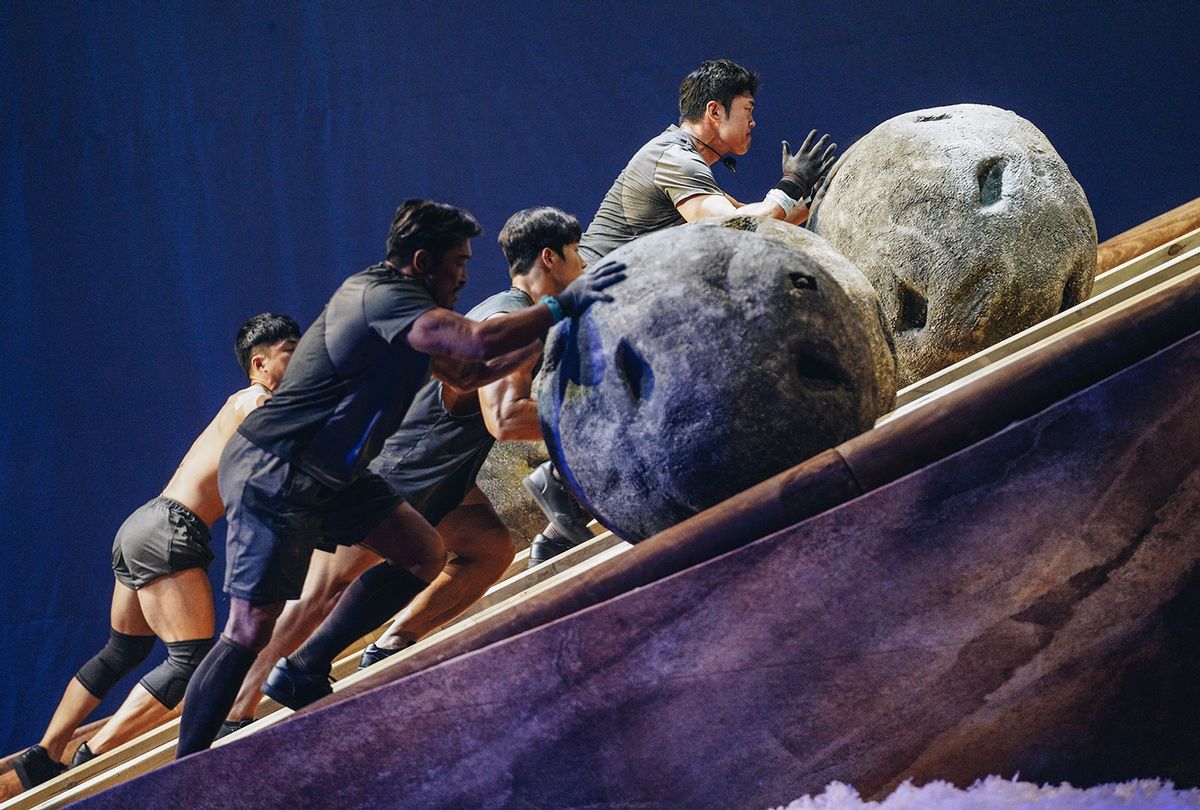
Shares